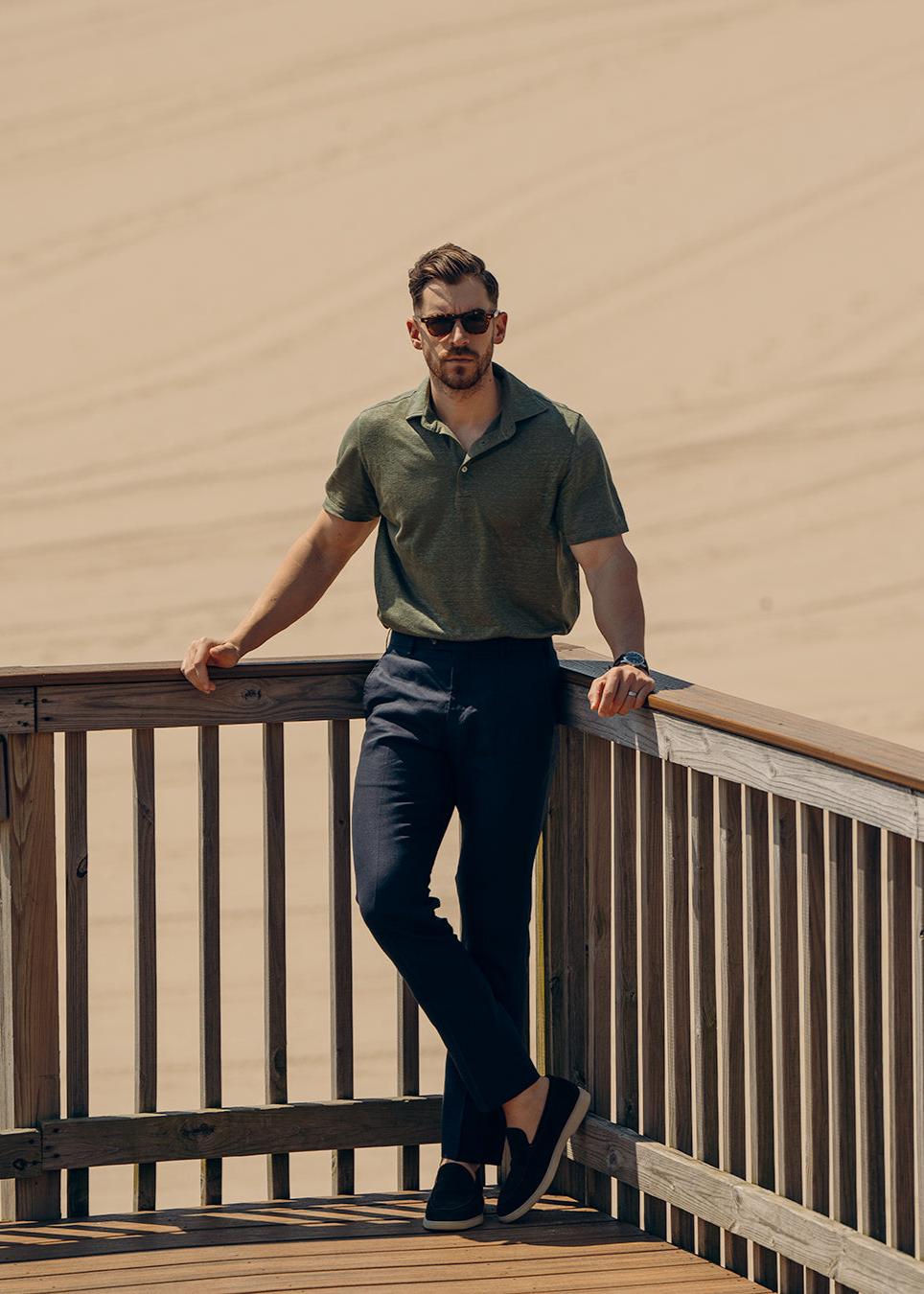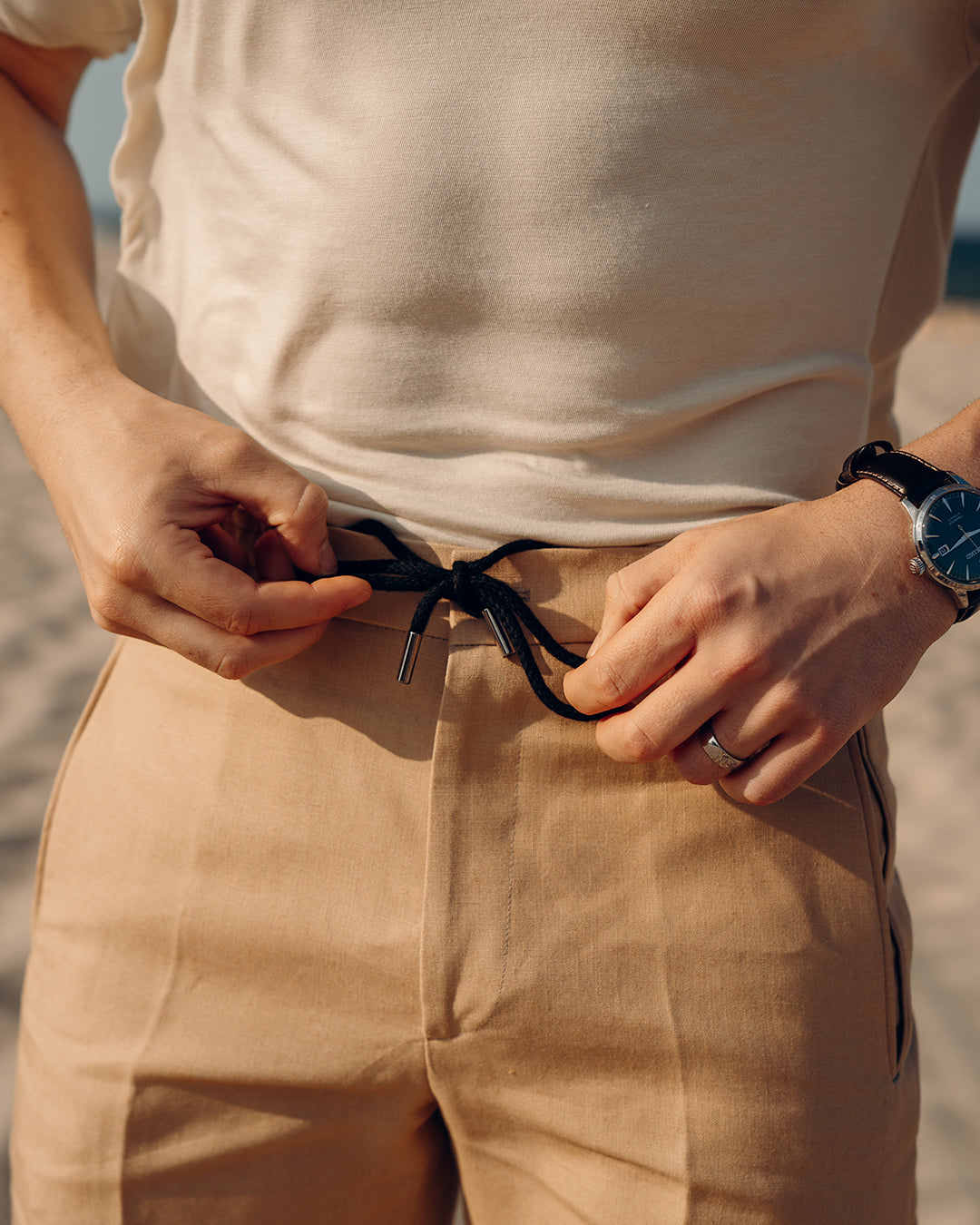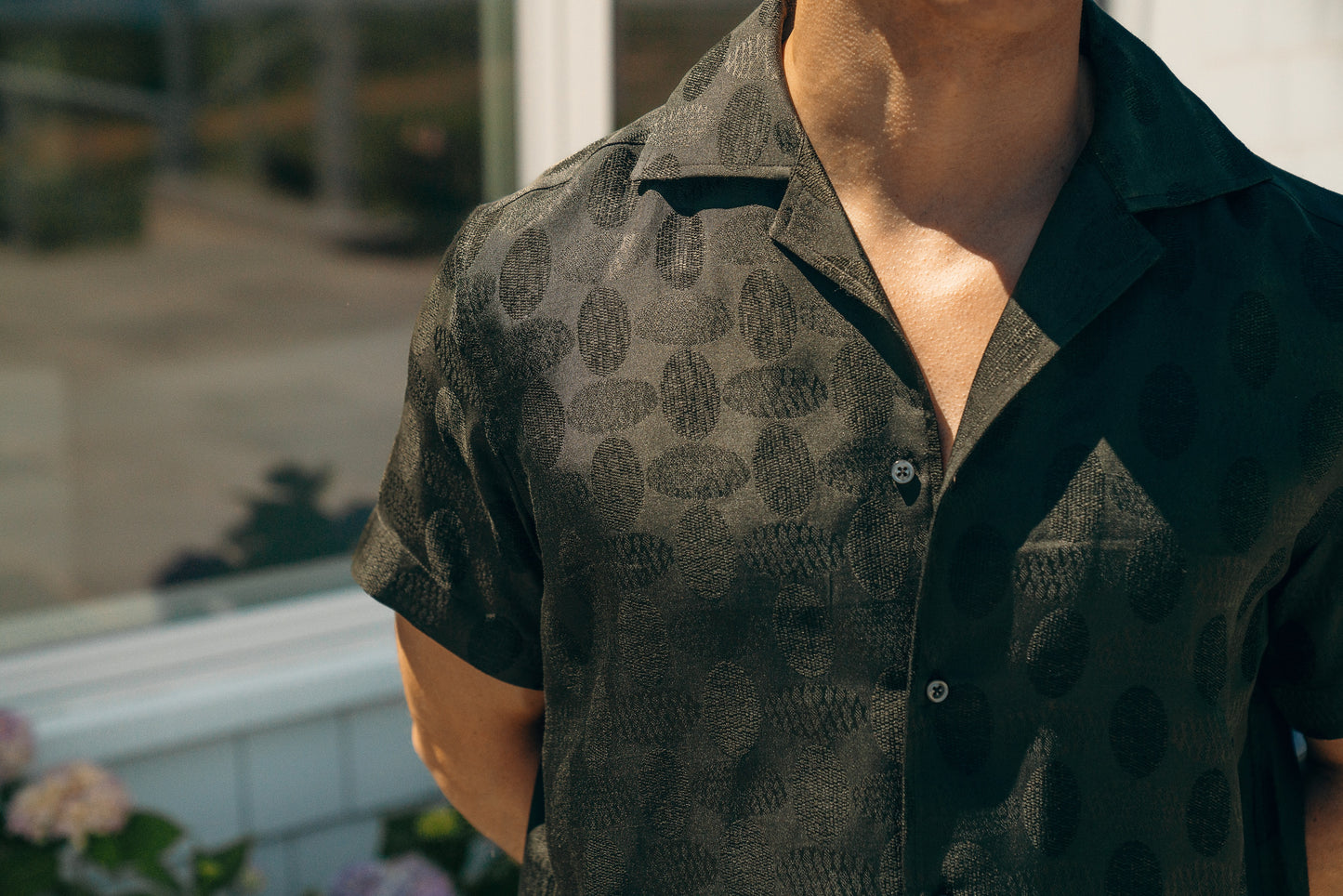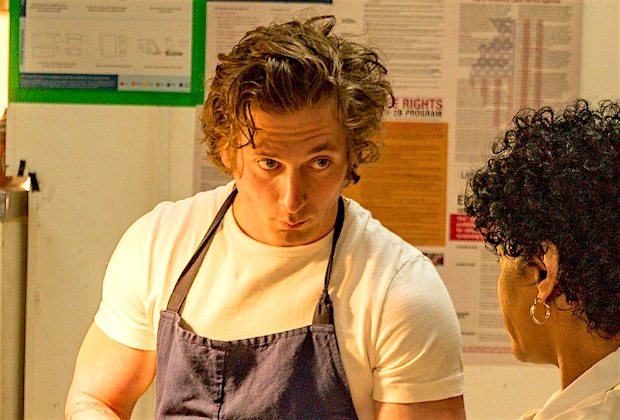
It would seem undershirts are really having a moment, huh? Nowadays you see article after tweet after “where can I get that” thread for the white tees as featured in the new Hulu show The Bear. Then came Brad Pitt looking great (mostly because he’s Brad Pitt) in a white shirt in the film Bullet Train. A shirts, or tank tops, or the garment we rather blithely associate with spousal abuse (more on that later) are popping up on runways with gourmet versions going for $TooMuch. But this hasn’t been the first time that the undershirt, and I mean this in the most classical sense of a good ole white garment you’re traditionally to wear underneath some other shirt, has come into some wanted or unwanted attention in the popular conscious, conjuring up very specific associations and demographics. Let’s get into it.
We’re well divorced from the actual tough living implied by white garments, but there is still something that feels utilitarian or deliberately incomplete about wearing a plain white something up top. Maybe it’s the association with stripping off the perfunctory top so as to get down to business, like, fixing motorcycles or something? Maybe because they tend to invite stains from messy pastimes or labors and have become associated with activity more than occasions? Either way, undershirts' association with the working class is well-entrenched enough that even when you’re wearing a $500 white tee you still look ready to use a power drill. This is no accident and, honestly, is a little fraught.

In classic cinema there were two big moments for undershirts. The first moment actually almost tanked undershirts as a whole damn business. Blame the rakish charm of Clark Gable. In the 1934 movie It Happened One Night there’s a famous/infamous scene where, when forced to share a hotel room, Gable takes off his shirt to scandalize Claudette Colbert’s character. Normally a guy in the 30s would have an undershirt beneath his proper button up, but for the sake of getting to Gable’s beefiness the undershirt was excised. This movie was so popular and beloved (it won all 5 major Oscars and is still a really fun watch) that men the country over emulated Gable and stopped with the undershirts. The market crashed (not just because it was the depression) on all undershirts, with sales dropping over 70%. Now those are some powerful pectorals, god damn.
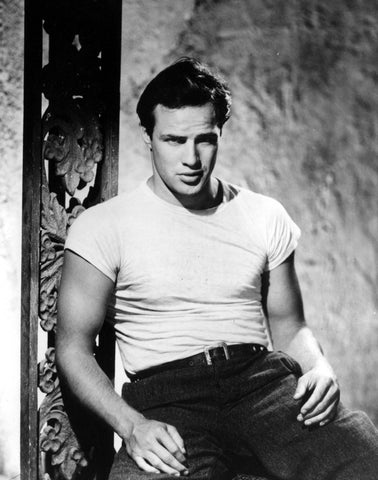
WWII saw GIs being issued undershirts so they came back into utilitarian style and gradually migrated to everyday wardrobe, but still as underclothes. It wasn’t until other noted handsome man of history Marlon Brando debuted as Stanley Kowalski in 1951’s A Streetcar Named Desire that the white tee came to prominence as outerwear. See, Stanley (he of “STTEEEELLLLLLAAAAAA” fame) was framed as a working class brute next to the genteel belle Blanche DuBois and the movie showed this by putting Brando in a very tight, muscle-flaunting, mussed up tee. Even though Stanley was a real dickwad for much of the story Brando sold the hell out of it and it turns out people want to emulate Hollywood’s hottest even when being dickwad characters. Undershirts came out on top and it became more de rigeur to wear just tees, especially among the younger set.
However, the fact that Stanley was rough with his wife Stella wasn’t lost on a viewing public. There was still a classist association of wearing tees with dirt, grime, and the poor. Not helped was the public scandal from 1947 about a Detroit man named James Hartford, Jr, who beat his wife to death, photographed in the popular A-shirt model of undershirt. Now while etymologists may debate this being the very specific impetus for the term, that style of undershirt would be popularized as the “wife beater.” Yeah, maybe you’ve referred to them in your lifetime as such, but when you stop to think about it for, like, a second, you realize how fucked of a term it is, huh?

Hanes or Jockey or whoever certainly never sold three-packs of shirts with “wife beater” written on the label, but the term stuck. Wearing tees was one thing, they were mainstreamed in the 50s and 60s as popular garments perfect for putting slogans and logos on, but those ribbed tanks would retain their more scandalous association for a while yet. Whether they were used as visual shorthand for the gay men of The Castro or the gangstas of Compton, popular conception was still that these shirts had some kind of outsider status, something dangerous about them. And wouldn’t you know, as with most items that once were the domain of lower classes, late 20th century high class fashion adopted it for irony and/or subversion’s sake. Cue billboards with Calvin Klein underwear. Throughout all of this fashion people did not shy away from the “wife beater” term, and so its use was spread along until recently when people were like “hey, uh, no.”

At this point, both tees and A-shirts have been pretty much freed of their classist associations. Tees, in particular, have enjoyed so many alterations in styling and materials that there’s one for every budget and occasion. While the A-shirt is, at this point, as ubiquitous as the white tee for everyday wear, it remains the more risque of the two. After all, the fit is ribbed, therefore tighter, and you see all that muscly arm. And perhaps on those of us with less muscly arms and more doughy bellies they can conjure less “sexy runway walk” and more “Tony Soprano getting the morning paper” (aka the pinnacle of fashion). But, like everything these days, they have their place. After all, if they didn’t, people wouldn’t be so hot and bothered over an actor’s plain ole undershirt.
Have you guys seen The Bear? I liked it! I know it seems silly that a cook in an Italian beef restaurant would be wearing such expensive shirts, even taking into account his high class chef background, but I think we were supposed to have more clothes nerdery from the show. What happened to that bit in the first episode when it seems like our protagonist is a denim collector, keeping Orange Tab Levi’s in his oven? Guess it was excised for more “plot” and “character development.” We were this close to a TV icon who subscribed to r/malefashionadvice.

